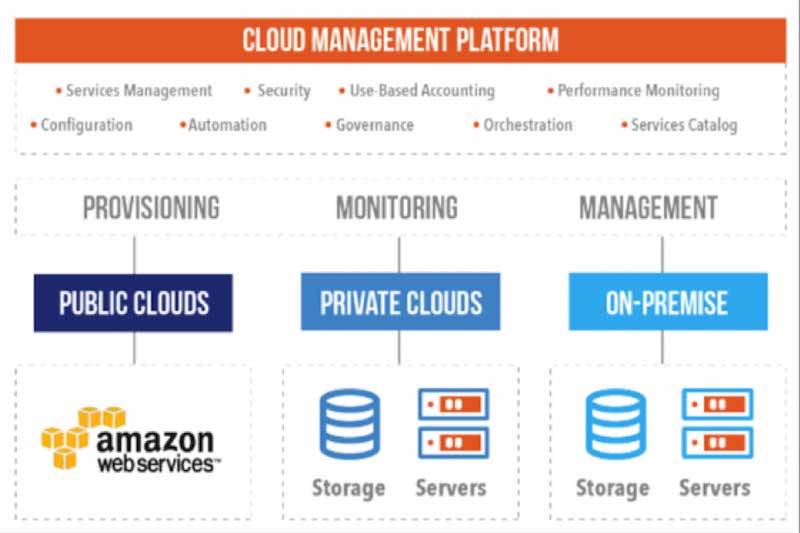Just as in the past, today’s enterprises must manage their IT budget carefully. With increased power and performance comes greater costs, but opting for lower cost solutions will negatively impact workflow and productivity. In the long term, this will limit the growth and profitability of the business.
However, modern businesses have a huge advantage when it comes to balancing cost, performance, speed, and capacity. Cloud solutions now offer the perfect mix of power and flexibility, all instantly scalable, simple to manage, and at a lower cost than investing in on-site software and hardware infrastructure.
The Mistake Most Enterprises Make in Digital Transformation
The benefits the cloud offers to large organizations are clear. But, it’s not a simple case of racing to full cloud adoption. Simply moving legacy applications and services to the cloud will not provide the benefits of a cloud-first strategy and in many cases can actually make IT systems more complex and cumbersome.
Most enterprises have existing IT services that were built on traditional three-tier infrastructure and configured for deploying in static data centers, rather than the fully scalable and flexible model the cloud provides.
There is no benefit to simply moving these services to the cloud as they haven’t been developed with the cloud environment in mind. While moving completely from legacy systems to new SaaS solutions is an option for some businesses, workflow, training, and infrastructure considerations mean that most enterprises understandably are reluctant to abandon their legacy systems in exchange for new cloud-based technology.
This is the main reason why enterprise cloud adoption has grown at a slower rate than that of small and medium businesses. Large organizations are now realizing that in order to reap the maximum benefits from moving to the cloud, it usually makes more sense to opt for a hybrid cloud environment than taking an “all or nothing” approach.
Cloud software providers such as Nutanix that offer enterprises a hybrid or hyperconverged infrastructure are already emerging as leading cloud solutions for enterprises as we move through 2020 and beyond.
Using HCI to Upgrade Legacy IT Infrastructure
Hyperconverged infrastructure (HCI) is an agile and flexible way for large organizations to update and upgrade their storage infrastructure, ensuring their data centers are cloud-ready and improving operational efficiency.
HCI came about from the rapidly growing data storage and performance needs of today’s modern enterprises. The emergence of the cloud in 2006 offered scalable infrastructure and storage solutions for small to medium business, but public cloud solutions for data storage, backup, and SaaS are simply not designed with enterprise-level organizations in mind.
HCI offers an enterprise-grade flexible solution for large organizations that have outgrown their legacy three-tier IT infrastructure. These three tiers refer to data storage, network, and storage tiers, and this infrastructure was the standard for enterprises for many years.
However, siloing IT infrastructure in this way adds management costs and complexity that is no longer necessary. When combined with the standard budget IT cycle of three to five years and vendor lock-in for traditional server architecture, three-tier systems mean that the IT capacity and capability of enterprises often lags behind the needs of the business.
HCI provides a single management platform for applications and servers, where capacity, storage, memory, and capacity can all be managed to meet the needs of individual workloads.
Hyperconverged infrastructure uses servers as building blocks, each with its own capacity, storage, and memory, and combines these physical resources with an intelligent software management platform. The system’s resources as a whole can then be served up as and when they’re required, optimizing hardware and service performance.

This removes the silos and complexity that exists in traditional enterprise IT systems, leaving IT teams free to focus on innovation and providing value to the business, with infrastructure that can be scaled at need as business needs grow.
When resources are converged in this way, it eliminates the need for IT specialists in storage, networking, and other skillsets, instead building applications on one full stack for easier management and greater flexibility and agility.
HCI enables IT leaders to modernize their enterprise infrastructure, combining the advantages of public cloud with the control and security of on-premises hardware.
79 percent of large enterprises are currently expanding their use of HCI, demonstrating how the technology acts as an effective bridge between outdated and inefficient legacy systems and modern cloud technology. Gartner forecasts that 20 percent of business-critical applications on three-tier infrastructure will transition to an HCI model by 2020.
Using Desktop Virtualization and Desktop as a Service (DaaS) to Deliver Applications at Scale
Every large organization has the challenge of deploying new services and applications at scale. In a traditional three-tier IT infrastructure, upgrading or installing new software across hundreds or thousands of devices requires a huge amount of time, money, and people resources. One must factor in the time for deploying the applications on each user machine (even if this is done remotely as a batch operation) and consider how and when to scale up storage, memory and other resources to meet the needs of evolving technology.
Desktop as a Service (DaaS) is hyperconverged infrastructure’s answer to this conundrum. Hosted virtual desktops enable IT teams to deliver applications at any scale, simply and efficiently.
For example, when the Hastings & Prince Edward Counties Health Unit in Ontario, Canada moved to a Nutanix HCI infrastructure with virtual desktops, the IT department found they were able to scale to deliver 50 percent faster desktop performance during peak times and higher system availability in general.
DaaS streams virtual desktop experiences from the cloud. End users get the flexibility to work from almost any device or location, and IT teams benefit from simplified management and delivery of new applications.
DaaS enables businesses to escape from the time-consuming and expensive task of constantly upgrading fleets of hardware to keep up with the latest technology and maintain data security. By moving the majority of the storage and power requirements to an enterprise or cloud data center, computers and other user devices can be repurposed as access points with simplified software installation and no data stored locally.
By making DaaS a part of the digital transformation strategy, you empower your IT team to focus on innovation and providing better business solutions, rather than exhausting their resources on user support and software and hardware upgrades. Meanwhile, the cloud provides an infinitely powerful infrastructure that is scalable on demand. Your business benefits from simplified scaling and improved security, while retaining full control over your IT environment.
Michael Brenner is a keynote speaker, author and CEO of Marketing Insider Group. Michael has written hundreds of articles on sites such as Forbes, Entrepreneur Magazine, and The Guardian and he speaks at dozens of leadership conferences each year covering topics such as marketing, leadership, technology and business strategy. Follow him @BrennerMichael.
© 2020 Nutanix, Inc. All rights reserved. For additional legal information, please go here.


